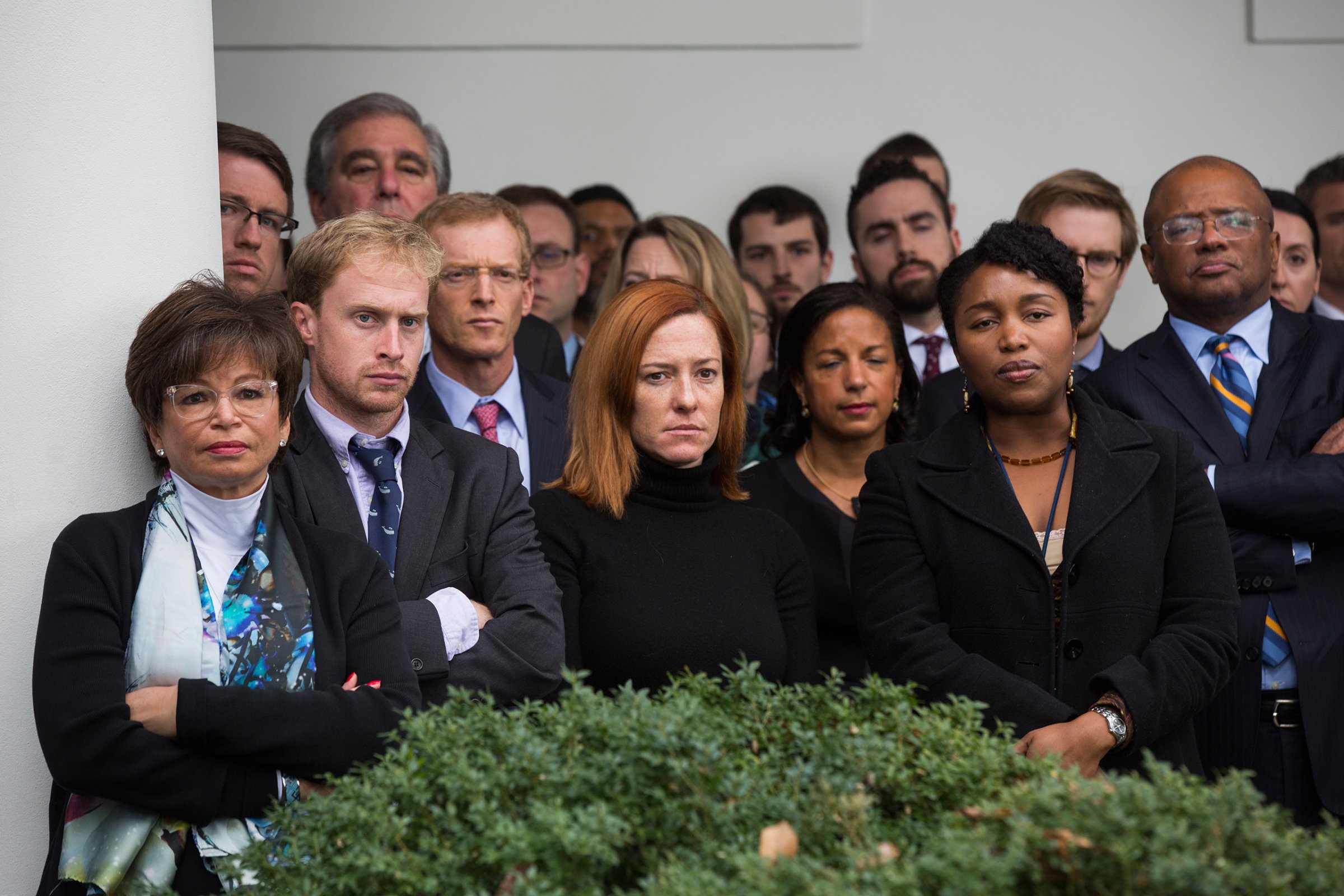
The election of Donald Trump to the presidency on Nov. 9 won’t end the construction and widespread dissemination of fake news about real people. That’s a fact. Without a concerted effort to combat it, perhaps it will only amplify.
Exhibit A: What’s happening in this photo? And when was it taken? That depends on where you first saw it online: which website posted it, which user on Facebook or Twitter shared it, what words were paired with it.
These are White House staffers and top members of the Obama administration in the Rose Garden this week. That’s Valerie Jarrett, a senior advisor to President Obama, leaning cross-armed against the white column. In the center with red hair is Jennifer Psaki, the White House communications director. Behind Psaki, to her left, is National Security Advisor Susan Rice.
Here’s how the image was shared on Twitter on Thursday morning, as Obama was due to meet President-elect Donald Trump.
This picture was not taken on Thursday, but rather a day earlier as Obama spoke in a live televised address after Democratic presidential nominee Hillary Clinton conceded to Trump. Their expressions reflect how they felt watching their soon-to-be former boss give one of his last major speeches, not their emotions as they saw his successor arrive at the White House for the first time. That may seem minor, but it’s a big distinction, especially for those on Twitter who sought to read a lot into the photo.
Some of those who tweeted the photo on Thursday may have made a mistake, thinking the picture they shared was in-context. At least one of them was called out for it and tweeted a correction. Then it becomes a numbers game. The original tweet, which got more than 600 retweets, is still live. The correction 13 minutes later has only six retweets.
It’s a fast-moving stream of information that requires an intricate level of attention for which its users may not have enough time. But in a media climate like this—raw from allegations of bias, intense efforts to prove otherwise and the reality of the battle ahead against this very type of falsity—perpetuating images like this is a severe disservice. It happens countless times a day.
My colleagues Charlotte Alter, a writer based in New York, and Michael Scherer, the Washington bureau chief, recently put it best: “It’s a problem of quantity as much as quality: there is simply too much information for the public to accurately metabolize, which means that distortions–and outright falsehoods–are almost inevitable. The same technology that gives voice to millions of ordinary citizens also allows bogus information to seep into the public consciousness. Mainstream journalists are no longer trusted as gatekeepers to verify the stories that are true and kill the rumors that are false. Which means that phony conspiracy theories are often mixed in with accurate journalism and history.”
It also means that one wrong tweet is a match to the fire that was an 18-month campaign season of untruths. A retweet is the fuel. Who knows how long it will be until the smoke clears.
More Must-Reads From TIME
- The 100 Most Influential People of 2024
- The Revolution of Yulia Navalnaya
- 6 Compliments That Land Every Time
- What's the Deal With the Bitcoin Halving?
- If You're Dating Right Now , You're Brave: Column
- The AI That Could Heal a Divided Internet
- Fallout Is a Brilliant Model for the Future of Video Game Adaptations
- Want Weekly Recs on What to Watch, Read, and More? Sign Up for Worth Your Time
Contact us at letters@time.com